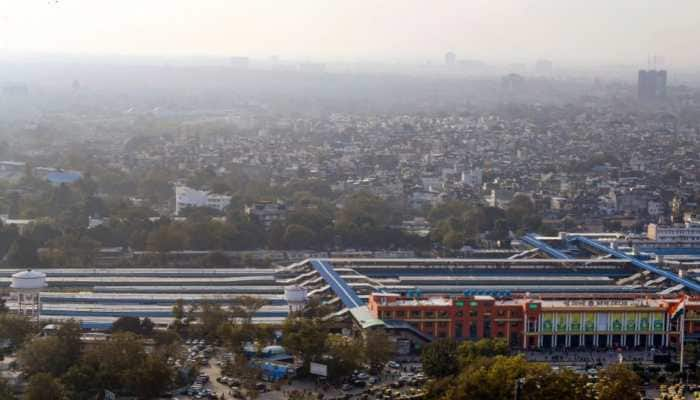Watch: Bengaluru Airport Terminal 2 Faces Water Leakage Amid Rainfall
The video shared online shows the stagnant water on the floor of the newly inaugurated Terminal-2 of the Kempegowda International Airport in Bengaluru.
Trending Photos
) Image Source- Twitter
Image Source- Twitter The newly built Terminal-2 of the Kempegowda International Airport in Bengaluru started leaking on the kerbside due to heavy downpours, an airport official said on Thursday. The videos and pictures of stagnate water on the floor of the new terminal have surfaced online and are getting sharp reactions from the social media users. After the incident went viral Bangalore International Airport Limited (BIAL) issued a statement addressing the situation.
"A heavy downpour on the evening of May 2, 2023, caused leakage on the kerbside of Terminal 2 at Bengaluru Airport," the spokesperson of the Bangalore International Airport Limited (BIAL) said in a statement.
Also read: Delta Airlines Flight Delayed By 3 Hours Due To Swarm Of Bees On Aircraft Wing
It further said, "We acknowledge that a large and new infrastructure such as T-2 will have teething problems, which we are attending to. Our teams are being pressed into action to resolve all issues". The spokesperson added that the BIAL was committed to maintaining the highest standards of infrastructure and safety at both its terminals.
The videos shared online got the attention of Congress leader Supriya Shrinate, who ended up making a sarcastic comparison of the airport with the "rain forests of Amazon." She further added that the new airport built at a cost of Rs 5,000 crore "submerged underwater" after "first rain."
This is a video not from rain forests of Amazon but Terminal 2 of Kempegowda International Airport of Bengaluru, Karnataka.
First rain has the airport terminal built at a cost of ₹5000 crore submerged under water
This is the New Infrastructure of PM @narendramodi Ji’s… https://t.co/FrRjEgqvNF pic.twitter.com/wKZgvlYNMS — Supriya Shrinate (@SupriyaShrinate) May 3, 2023
The Terminal-2's construction cost Rs 5,000 crore, and has 2,55,000 sq m of space is designed to accommodate at least 25 million flyers per year. T2 is referred to as a "terminal in the garden" since many types of flora and trees surround it. 180 rare plant species, more than 3,600 additional plant species, 600 70-year-old trees, bamboo cladding, 620 indigenous plants, 7,700 transplanted trees, 96 species of lotus, and much more are among its many highlights.
Stay informed on all the latest news, real-time breaking news updates, and follow all the important headlines in india news and world News on Zee News.
Live Tv







)
)
)
)
)
)
)
)
)
)
